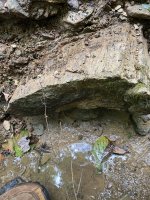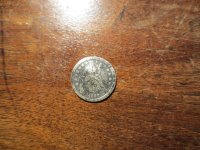In the earlier part of the 1900s, possibly even the late 1800s Lodi Indiana was known statewide and nationwide for its artesian wells. Artesian water was bottled and sold by snakeoil salesmen all around
Lodi is located on the banks of the wabash river where fountain county, parke county and vermillion county meet. Although Lodi is in Parke county, Lodi park was in fountain county. Lodi park was where the wells were located, the wells filled a few public "baths" where folks from all around would come to soak in to cure many ailments including arthritis, or so it was r
umored.
My reason for bringing up this bit of history, I will be getting a metal detector in a month or so, and a large portion of the original Lodi park is now private property. A buddy of mine is very good friends with the guy who owns and lives on the property.
I have been to a few weekend parties at his place and he is a pretty good guy, so i am hoping he will allow me to md on his land.
I can imagine there almost has to be a fair amount of silver coins to be found there, possibly some non coin artifacts as well.
Has anyone else here ever heard of Lodi park?
Lodi is located on the banks of the wabash river where fountain county, parke county and vermillion county meet. Although Lodi is in Parke county, Lodi park was in fountain county. Lodi park was where the wells were located, the wells filled a few public "baths" where folks from all around would come to soak in to cure many ailments including arthritis, or so it was r
umored.
My reason for bringing up this bit of history, I will be getting a metal detector in a month or so, and a large portion of the original Lodi park is now private property. A buddy of mine is very good friends with the guy who owns and lives on the property.
I have been to a few weekend parties at his place and he is a pretty good guy, so i am hoping he will allow me to md on his land.
I can imagine there almost has to be a fair amount of silver coins to be found there, possibly some non coin artifacts as well.
Has anyone else here ever heard of Lodi park?
Amazon Forum Fav 👍
Last edited:






